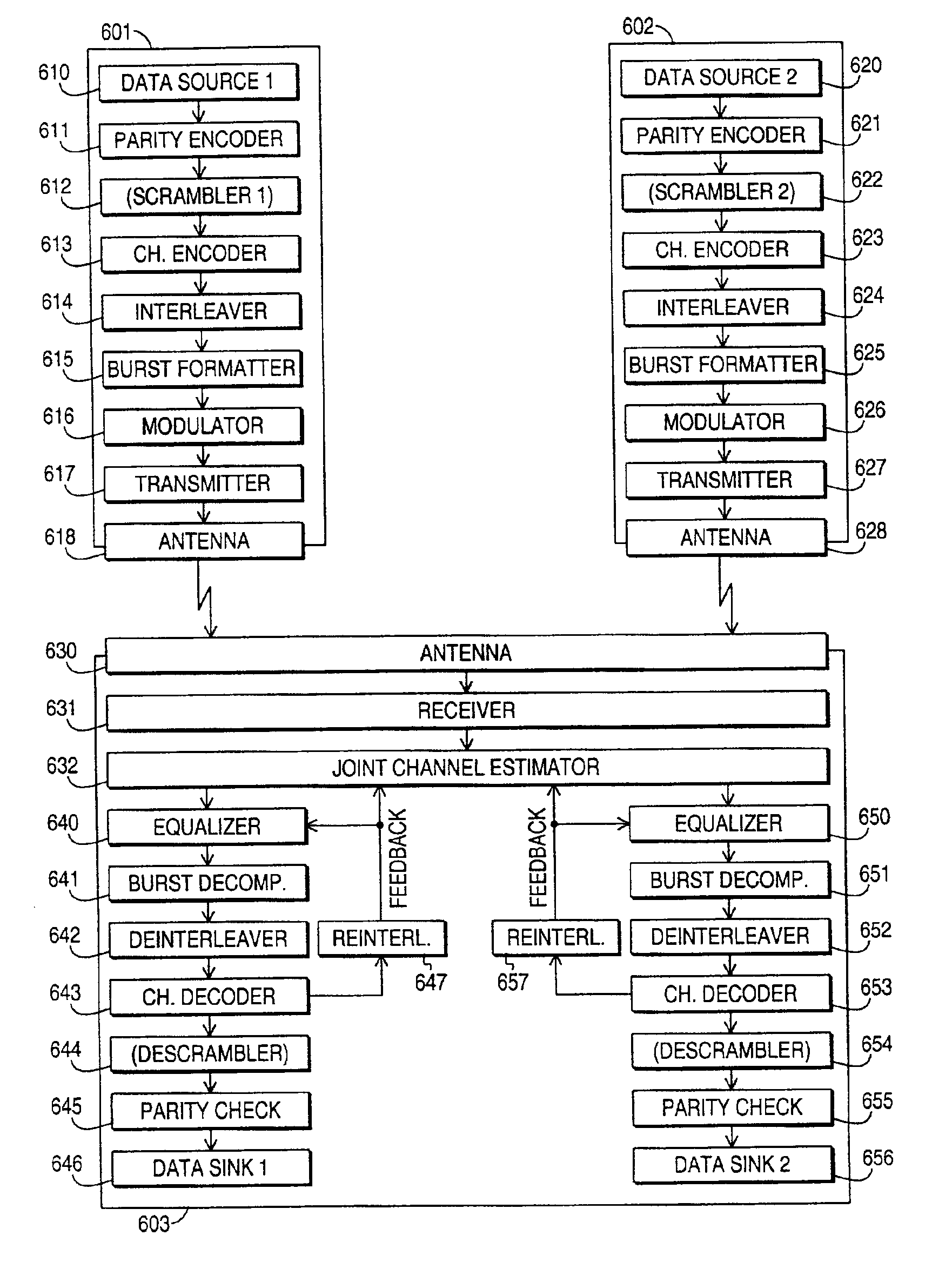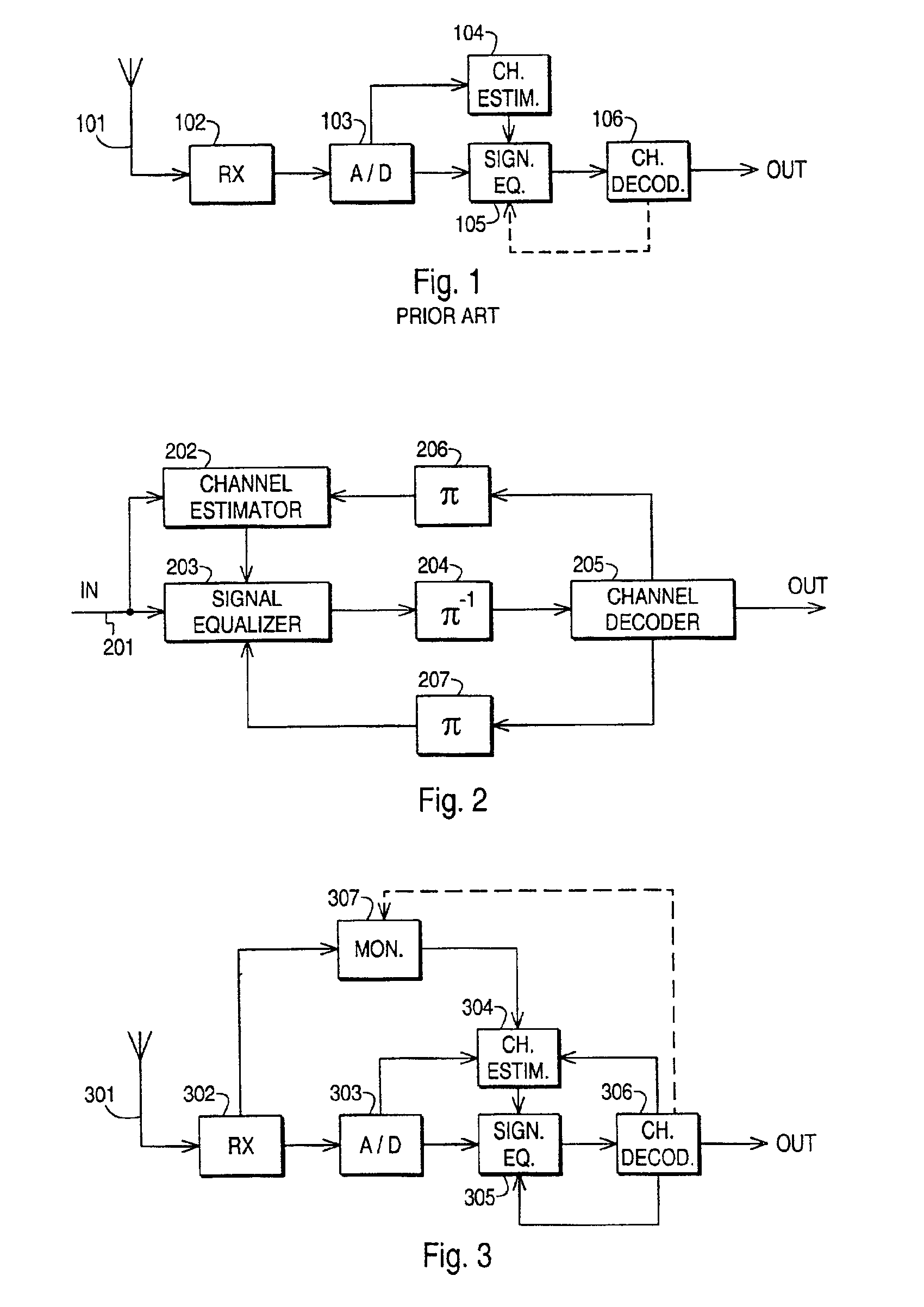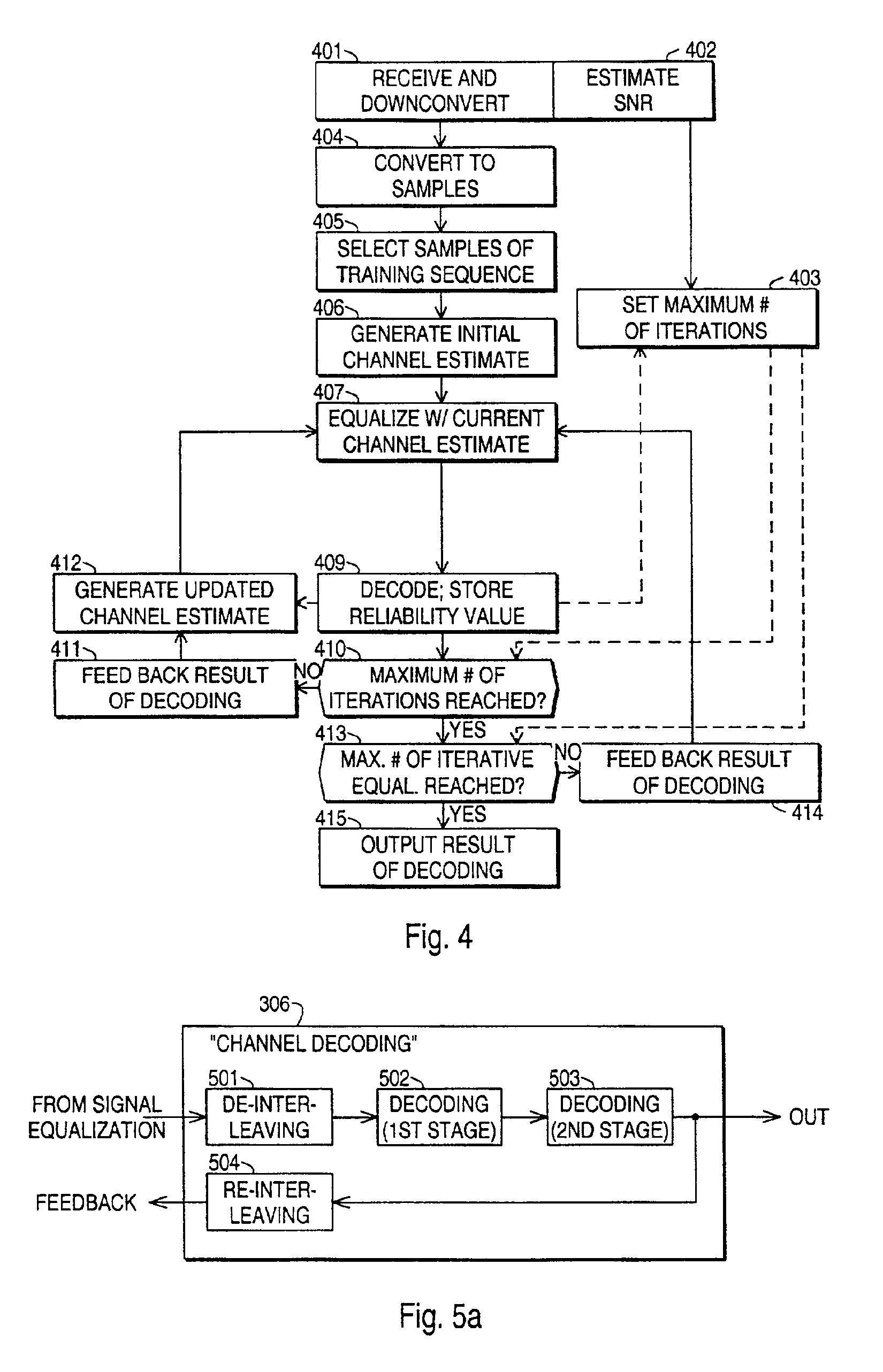Method and arrangement for iteratively improving a channel estimate
- Summary
- Abstract
- Description
- Claims
- Application Information
AI Technical Summary
Benefits of technology
Problems solved by technology
Method used
Image
Examples
Embodiment Construction
[0033]FIG. 2 illustrates an iterative channel estimation and signal equalization arrangement according to an advantageous embodiment of the invention. From the left in the figure comes an input line 201 through which there come samples that represent a received (and downcoverted and A / D-converted) signal. Since we are dealing with digital communication where signals are transmitted and received in certain discrete transmission blocks, we may use the designation y for a vector that contains the samples representing one received transmission block. The vector y contains both unknown information symbols and known symbols that belong to a training sequence.
[0034]The input line 201 is coupled both to a channel estimator 202 and a signal equalizer 203. From the former to the latter there is a connection for providing a channel estimate to the purposes of signal equalization in a manner known as such. The output of the signal equalizer 203 is coupled to a block 204 which represents any arb...
PUM
 Login to View More
Login to View More Abstract
Description
Claims
Application Information
 Login to View More
Login to View More - R&D Engineer
- R&D Manager
- IP Professional
- Industry Leading Data Capabilities
- Powerful AI technology
- Patent DNA Extraction
Browse by: Latest US Patents, China's latest patents, Technical Efficacy Thesaurus, Application Domain, Technology Topic, Popular Technical Reports.
© 2024 PatSnap. All rights reserved.Legal|Privacy policy|Modern Slavery Act Transparency Statement|Sitemap|About US| Contact US: help@patsnap.com










